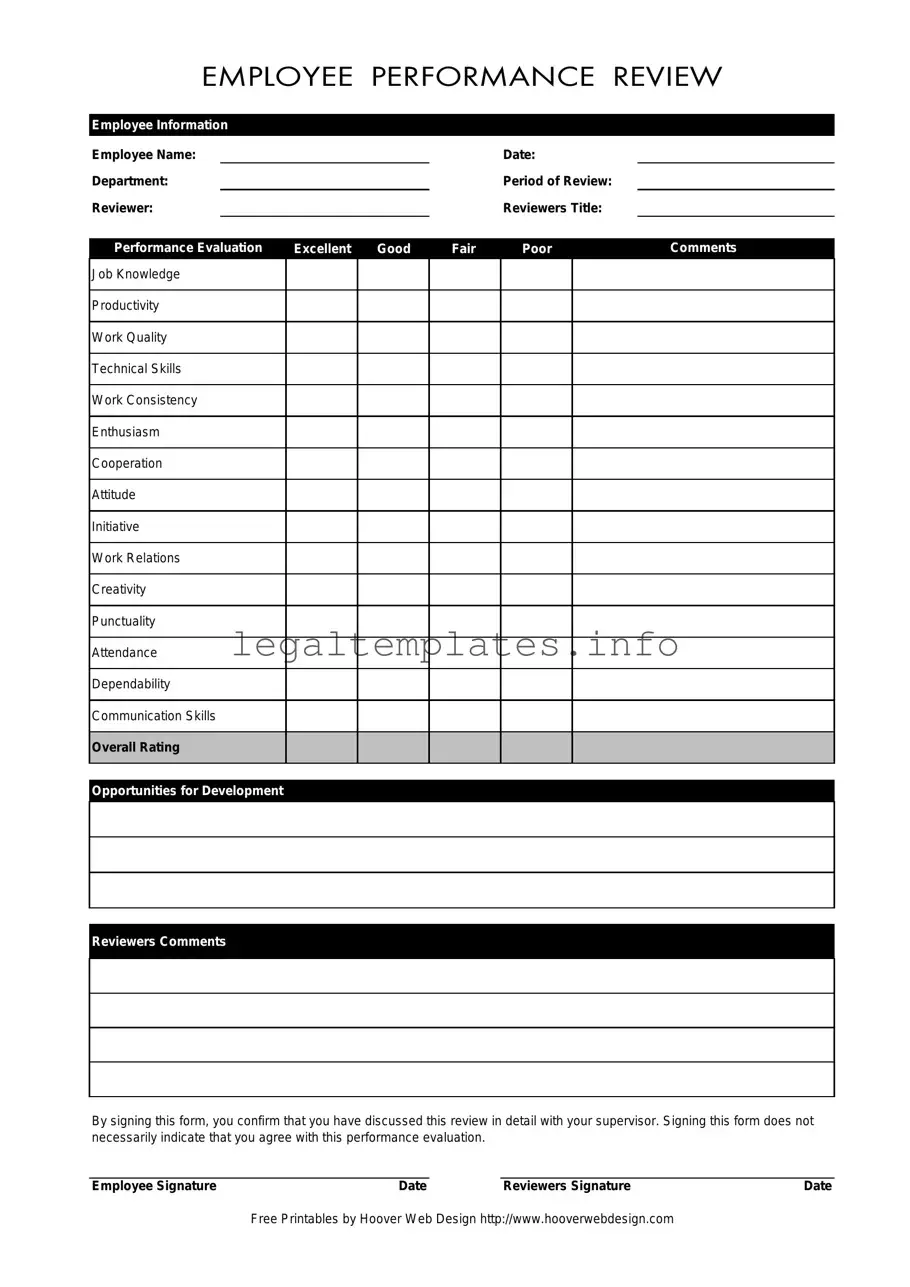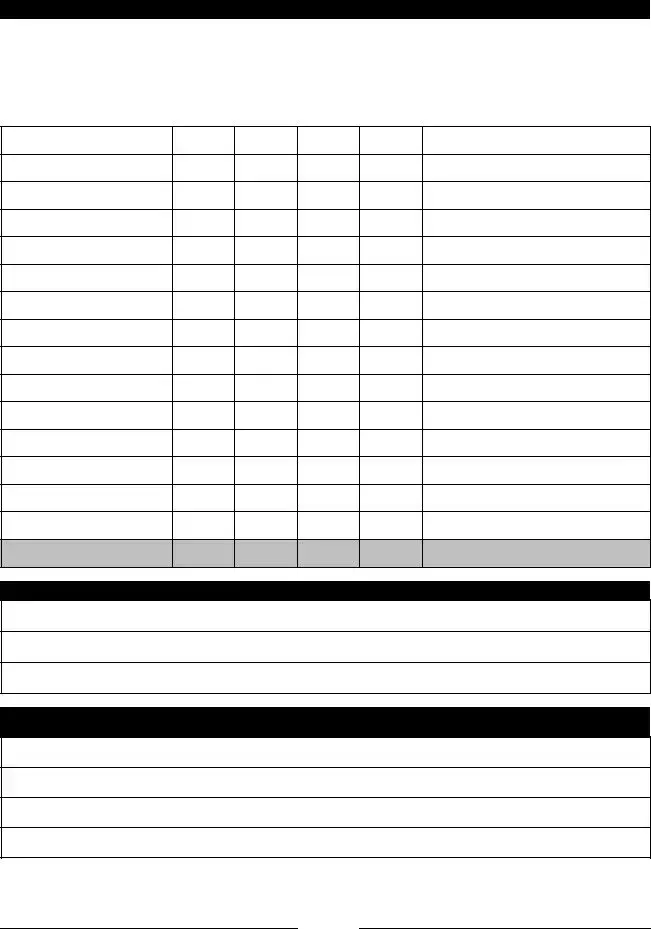What is the purpose of the Employee Form?
The Employee Form serves as a structured document for evaluating an employee's performance over a specific period. It covers various aspects of their work, from job knowledge to communication skills, and it provides space for both quantitative assessment and qualitative comments. This facilitates a comprehensive review of the employee's contributions and identifies areas for development.
Who fills out this form?
The form is typically completed by the reviewer, who is usually the employee's supervisor or manager. They assess the employee's performance, provide comments, and rate them in different competency areas. The employee is also required to sign the form, acknowledging that the performance review discussion has taken place.
What does the 'Period of Review' refer to?
The 'Period of Review' specifies the timeframe for which the employee's performance is being evaluated. This could be a fiscal quarter, half a year, or a full year, depending on the company's review policies. It sets the context for the evaluation, ensuring that both the reviewer and the employee understand the time period in question.
How are the performance categories rated?
Performance categories such as Job Knowledge, Productivity, Work Quality, and others are rated on a scale from 'Excellent' to 'Poor'. This scale helps standardize evaluations and provides a clear framework for assessing how well an employee is performing in each area. 'Comments' sections also allow for nuanced feedback beyond the simple rating system.
Does signing the form mean the employee agrees with the evaluation?
No, signing the form does not indicate agreement with the evaluation's conclusions. By signing, the employee acknowledges that the review has been conducted and that they have been made aware of the assessment. It is a procedural step that confirms the discussion took place, rather than an endorsement of the content.
What are 'Opportunities for Development'?
This section is dedicated to identifying areas where the employee could improve or expand their skills and competencies. It is an essential part of the form that focuses on growth and future potential, rather than only assessing past performance. It allows managers and employees to set developmental goals together.
What happens after the form is signed?
After the form is signed by both the employee and the reviewer, it usually becomes part of the employee's personnel file within the organization. It may be used as a reference for future evaluations, to support decisions related to promotions, raises, or development opportunities, and to document the historical performance and feedback over time.

